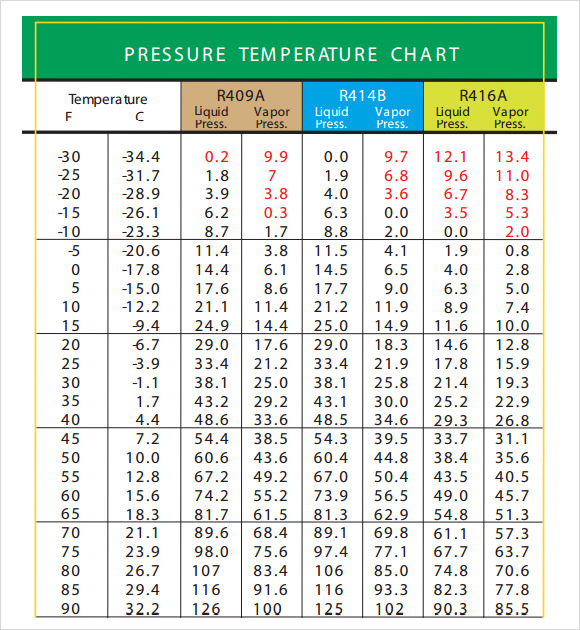

There are several physical phenomena that occurs when flashing a streamline.
#How to use depriester chart to find temperature pdf#
Once you have a solution to the exercises you will submit your answers as a PDF by uploading your file to be graded. The rest should be type-written for ease of reading when grading. The scanned pages should relate to using the graphs for solving the problem.

Important Note: You may submit scanned images or clear handwritten pages as a PDF that is less than 2 MB in size for this exercise. Submit your answers as a PDF in the Exercise 4 assignment inside the Lesson 5 Module, showing all the steps in your calculations, indicate the K values you read from the nomograms, and state your assumptions, if any. Would the summer, or winter asphalt product be “heavier”? Explain why. Explain which of the following switches will take place in the refinery in about a month, and why? 40 ptsĪ) Switch the deasphalting solvent from propane to pentane.ī) Switch the deasphalting solvent from pentane to propane. jar can be run by double clicking on the icon from a file explorer. For binary systems to solve for bubblepoint calculation (T is given). In late fall this refinery switches operations to produce more fuel oil from VDR for the coming winter months, producing still some asphalt, but in lower quantity. This calculator essentially acts as a DePrieseter chart, calculating the vapor-liquid equilibrium ratio (ie K-Value) for a variety of compounds at a particular temperature and pressure. An alternative measure of composition is the convergence pressure of the system, which is defined as that pressure at which the K values for all the. MW_ethane = 30.07, MW_pentane = 72.15 Liquid densitites: rho_E = 0.54 g/ml (estimated), rho_p = 0.A refinery in Northwest Pennsylvania produces asphalt as an important product that brings revenue, particularly during the summer months. The Kellogg and DePriester charts and their subsequent extensions and generalizations use the molar average boiling points of the liquid and vapor phases to represent the composition effect. Assume the vapor is an ideal gas to calculate vapor densities. Find the dimensions in metric units required for a vertical flash drum. Find V/F, V, L, liquid mole fraction, vapor mole fraction. assingment 2 with solutions department of chemical materials engineering che 416 equilibrium stage processes winter 2017 assignment (due 4:00pm, feb. The drum operates p_drum = 700 kPa and T_drum = 30^degree C. We wish to flash distill a feed that is 55 mol% ethane and 45 mol% n-pentane.

Find the mole fraction of n-butane, Z_B, in the feed. The feed mole fraction of ethane is z_E = 0.20. A flash drum operating at a pressure of 2.0 bar and a temperature of 0^degree C is separating a mixture of ethane (E), n-butane (B), and n-pentane (P). 494-95) have a set of DePriester Charts, which are plots of correlated K. We wish a 90% recovery of n-hexane in the liquid (that is, 90% of the n-hexane in the feed exits in the liquid product). For a given temperature and composition, this diagram tells us the nature and. A flash drum operating at 300 kPa is separating a mixture that is fed in as 40 mol % isobutane, 25% n-pentane, and 35% n-hexane. At 95oC, what is the mole fraction of benzene in the liquid phase and vapor phase Solution: a) Required: Tbubble, Tdew Let ( ) 10 10 219. Continue until your answer is within 0.5^degree C of the correct answer. Find the bubble point and dew point temperatures of 0.5 benzene and 0.5 toluene, using Raoults law and Antoine equations. A related concept, the 'distribution coefficient', can be used to relate the equilibrium compositions of two liquid phases. 494-95) have a set of 'DePriester Charts', which are plots of correlated K values for hydrocarbons. For light hydrocarbons, the approximate -values can be determined from DePriester charts, which have been fit to the following equation:, where the constants, ,, ,, and are tabulated 1. K (or DePriester) Chart (high T range) in American Engineering Units from Introduction to Chemical Engineering Thermodynamics (7th ed) by Smith, J.M., Van Ness, H.C., and Abbott, M.M. We desire a liquid that is 85 mol% n-hexane. Smith, Van Ness, and Abbott (5th ed., pp. Feed rate is 10 k mol/h, and drum pressure is 200 kPa. We wish to flash distill a feed that is 10 mol% propane, 30 mol% n-butane, and 60 mol % n-hexane.


 0 kommentar(er)
0 kommentar(er)
